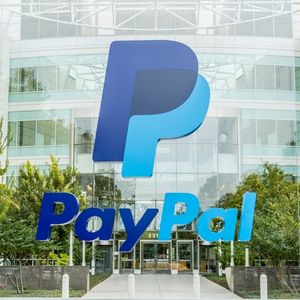Market Pulse
As the traditional financial sector increasingly grapples with the transformative potential of blockchain technology, the alignment of digital assets with established global standards has become paramount. A recent commentary from Wellington-Atlus highlights a crucial development: the ISO 20022 messaging standard is set to enable compliant technologies like XRP to play a significant role in a new, interconnected financial era. This convergence signifies a critical step towards mainstream adoption for cryptocurrencies that can seamlessly integrate with existing financial infrastructures, promising greater efficiency and transparency in cross-border transactions.
Understanding ISO 20022: The Future of Financial Messaging
ISO 20022 is an international standard for exchanging electronic messages between financial institutions. It provides a common platform for developing messages in a structured, rich, and globally recognized format. Unlike older, more rigid messaging standards, ISO 20022 offers enhanced data richness, allowing for more comprehensive information to be transmitted with each transaction. This level of detail is critical for compliance, fraud detection, and reconciliation, making it an indispensable component for modernizing cross-border payments and securities settlement systems worldwide.
- Enhanced Data: Supports rich, structured data fields for transactions, significantly improving transparency and auditability.
- Global Standard: Adopted by major payment systems worldwide, including SWIFT’s phased migration, ensuring broad interoperability.
- Efficiency Gains: Streamlines operational processes such as reconciliation, reporting, and regulatory compliance.
- Future-Proofing: Designed to accommodate future financial innovations, including the integration of digital assets and blockchain technologies.
XRP’s Strategic Alignment with Global Financial Standards
The core argument from Wellington-Atlus centers on XRP’s inherent design aligning exceptionally well with the requirements of ISO 20022. The XRP Ledger (XRPL) is engineered for remarkable speed, consistently low transaction costs, and robust scalability, attributes that are highly complementary to the goals of a modernized financial messaging standard. For digital assets to be truly effective in interbank settlements or corporate treasuries, they must not only move value efficiently but also facilitate the exchange of robust transactional data.
XRP’s architecture allows for near-instantaneous settlement, often completing transactions in mere seconds, far outpacing traditional banking rails that can take days. When paired with the detailed messaging capabilities enabled by ISO 20022, financial institutions can leverage XRP for both rapid value transfer and comprehensive data exchange. This powerful combination directly addresses long-standing pain points in international payments, significantly reducing operational costs and enhancing the overall user experience for financial intermediaries and their clients.
Implications for Global Payments and Institutional Adoption
The global adoption of ISO 20022 by major payment systems, including SWIFT’s ongoing migration, creates an urgent and compelling need for digital assets that can integrate seamlessly. XRP, through Ripple’s various solutions like On-Demand Liquidity (ODL), is already strategically positioned to facilitate highly efficient cross-border transactions. With its compliance profile gaining increasingly wide recognition, financial institutions are actively evaluating XRP as a viable tool for real-time gross settlement (RTGS) and sophisticated liquidity management strategies.
This development is not merely theoretical; it opens practical, scalable pathways for banks and payment providers to explore XRP as a bridge currency that offers both unparalleled speed and critical regulatory adherence. The ability to comply with an international standard like ISO 20022 provides a crucial layer of trust and predictability that is often missing in the broader, more nascent crypto market, making it significantly more palatable for conservative financial entities.
The Road Ahead for Compliant Digital Assets
While XRP’s strong position regarding ISO 20022 compliance is undeniably noteworthy, it also highlights a broader, accelerating trend within the industry: the increasing demand for digital assets that can meet stringent regulatory and technical standards. Other cryptocurrencies and blockchain networks are also striving for similar interoperability and data richness. However, XRP’s established infrastructure, considerable market liquidity, and growing legal clarity (following recent court rulings in the U.S.) provide it with a distinct advantage in this rapidly evolving landscape.
The journey towards full, ubiquitous integration of digital assets into global financial systems will undoubtedly be incremental, but key milestones like ISO 20022 compliance serve to significantly accelerate this process. Institutions are actively seeking profound efficiency gains and substantial cost reductions, and well-designed digital assets offer a compelling solution when coupled with the necessary frameworks that ensure security, compliance, and unwavering reliability.
Conclusion
The commentary from Wellington-Atlus, observed on {current_date}, underscores a pivotal moment for XRP and the wider crypto industry. As global financial systems transition to the advanced ISO 20022 standard, XRP’s inherent capabilities for fast, low-cost transfers, combined with its potential for rich data exchange, definitively position it as a leading candidate for modernizing cross-border payments. This convergence of traditional financial standards with innovative digital assets promises to unlock unprecedented efficiencies, reduce friction, and ultimately pave the way for a more integrated, dynamic, and globally accessible financial economy in the years to come.
Pros (Bullish Points)
- Enhanced institutional adoption potential due to alignment with global financial standards.
- Improved regulatory clarity and increased trust from traditional financial entities.
- Potential for significant efficiency gains and cost reductions in cross-border payments.
- Strengthens XRP's competitive advantage against other digital assets in the payments sector.
Cons (Bearish Points)
- Implementation and full integration of ISO 20022 across all financial institutions will be a lengthy process.
- Ongoing regulatory scrutiny of XRP and other digital assets could still impact adoption rates.
- Competition from central bank digital currencies (CBDCs) and other blockchain solutions remains a factor.
- Market volatility inherent to cryptocurrencies could deter some risk-averse institutions.



